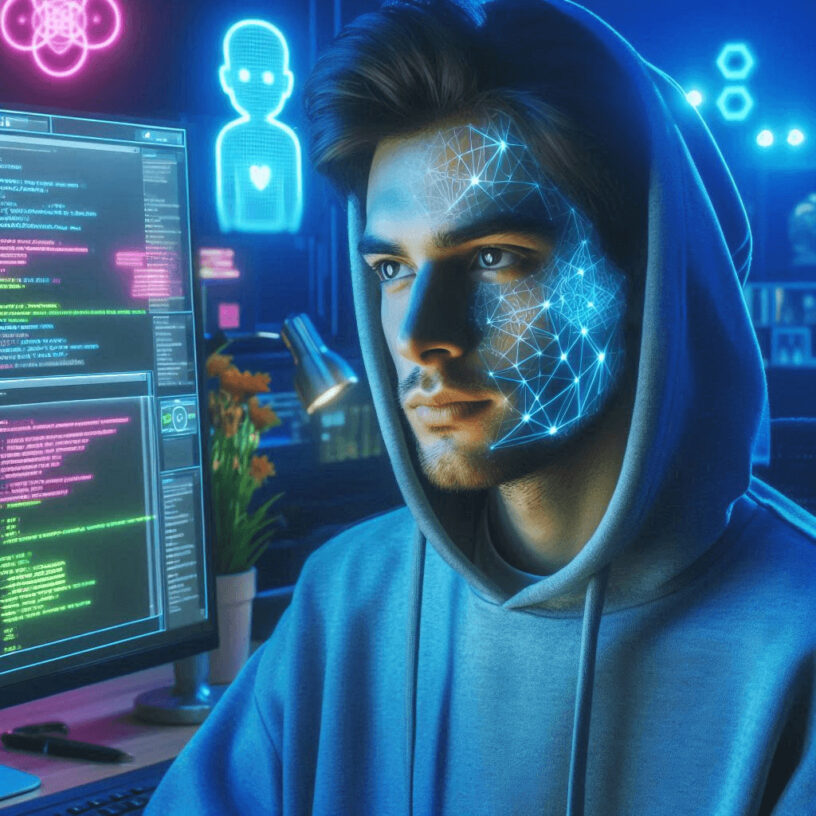You’re in the thick of web development. AI is making waves, and you want to ride them smoothly. Ever wondered how to smartly integrate AI tools into your workflow? You’re not alone. These tech marvels promise speed and efficiency, but where do you start? And more importantly, what’s the best approach for lasting impact?
We’ll explore practical strategies. Real-world scenarios await. Curious about stepping up your game with artificial intelligence in coding and design? Stick around for some valuable insights.
Leveraging AI for code optimization
Integrating AI into web development isn’t just a buzzword, it’s about finding smart solutions. Imagine using GPT-4 to streamline code cleanup or decompile binary code. This tool can identify redundant lines and suggest more efficient syntax. But you must approach it with caution.
Take the example of an e-commerce platform bogged down by slow load times due to bulky scripts. Developers employed GPT-4, which pinpointed bloated areas in the codebase, suggesting leaner alternatives. While initial tests showed improved performance, careful manual reviews were crucial.
Why? Because while AI offers quick fixes, nuances in logic or business rules may require human intuition for validation. Additionally, developers need a thorough understanding of how changes impact other parts of their system architecture.
In essence: harness AI’s speed and insight for optimization but back up suggestions with your expertise and judgment to maintain quality control throughout the process.
Using AI to automate wireframe and prototype creation
AI can significantly speed up wireframing and prototyping. Designers often spend countless hours on these preliminary steps, but tools like Uizard use machine learning to transform sketches into digital wireframes instantly. This rapid conversion frees you from repetitive tasks, allowing more focus on creativity.
Picture a startup in the fast-paced fashion industry aiming for quick app rollouts. By utilizing AI-driven tools, they generate interactive prototypes directly from simple hand-drawn designs.
The result? Quicker iterations and faster time-to-market without sacrificing quality. But don’t toss out traditional skills just yet. It’s crucial to critically assess AI-generated designs, ensuring they meet user needs and brand identity.
Blending human insight with technology enables designers to deliver innovative solutions while maintaining control over the final aesthetic outcome.
AI in creative content creation: Beyond traditional development
AI has redefined creative content creation by providing new avenues for web development. By utilizing platforms like OpenAI’s Codex, developers now generate sophisticated scripts and even create compelling multimedia experiences with minimal effort.
Think of it as having a virtual assistant that drafts initial designs while you focus on refining them.
Consider how AI-generated melodies influence website ambiance by incorporating custom soundtracks tailored to user interaction. Just like personalized playlists enhance the music streaming experience, integrating these compositions into websites offers unique audio elements without traditional limitations.
One gaming company recently leveraged AI to automatically adapt soundscapes based on player actions, adding a dynamic layer to their interface design. It transformed static environments into engaging realms that captivated users.
To truly innovate in content creation, merge human creativity with artificial intelligence capabilities, ensuring your work remains at the cutting edge of technological advancements.
Combining traditional design principles with AI innovations
Blending classic design principles with AI innovation creates more robust web solutions. Think of a seasoned designer collaborating with an AI assistant. This setup allows the best of both worlds: the intuition and experience of a human mind, complemented by machine efficiency.
Consider an educational platform updating its user interface. By integrating AI-driven design tools like Adobe Sensei, they enhance layout decisions while preserving fundamental design rules such as alignment and hierarchy.
This synergy ensures users enjoy visually appealing and functionally sound experiences. Harnessing this balance streamlines development processes without compromising core aesthetics or usability standards.











Leave a Reply